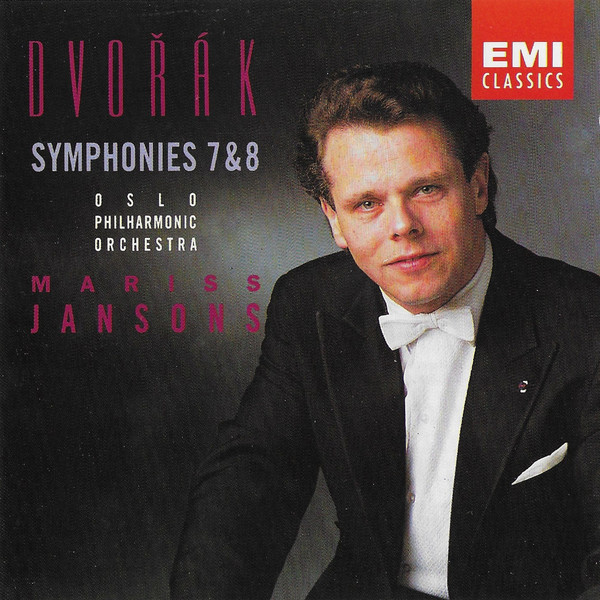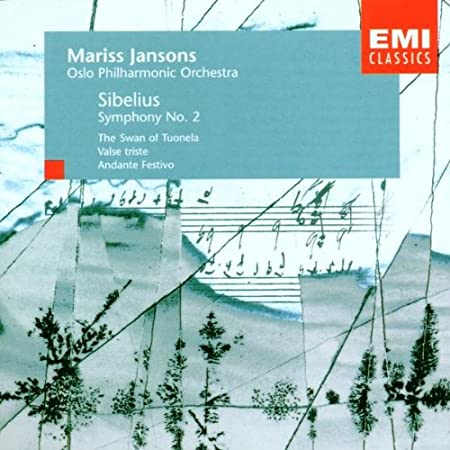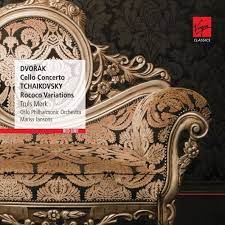Warner Classics release of all twenty one EMI Jansons/Oslo recordings plus five DVDS of selected NRK TV concert broadcast concerts

Dvorak: Symphonies Nos. 7 & 8
After taking a break on this personal reassessment of the Jansons/Oslo/EMI recordings as re-released on Warner, I’m ready to dive in with these next three recordings. The first of these is devoted to the music of Antonin Dvorak, namely his seventh and eight symphonies. Along with the “New World” – number nine – these are arguably his greatest symphonies, although the fifth and sixth are getting played more often, and I love his third and fourth symphonies.
This recording was made towards the end of January, 1992, and the symphonies were recorded back-to-back, as I recall. Our production team of John Fraser and Mark Vigars were back behind the console, and Mariss Jansons was in fine form during the concerts and sessions. He always showedthe great attention to detail and a high degree of energy in his work ethic, but when he came to record Dvorak, he seemed happier and even more energetic, as if that were possible.
The symphonies were “played in” in concert, and the sessions were scheduled around the concerts plus the Saturday after the last of the two concerts. I am happy to say that this was one recording in which things were generally straight-forward, and there weren’t many issues that needed repeating. The concerts were fun to play, and the sessions went extremely well.
The Symphony No. 7 in D minor, Op. 60 is my favorite of all the symphonies, and not just because it has a great timpani part (although that helps a little, I have to admit). The first movement, Allegro maestoso, is said to represent the sound of a train. Dvorak loved trains and actually incorporated their sound in several of his works. The second movement, Poco adagio is gorgeous and full of moments where the composer “smiles through his tears”, or so it seems to me. The third movement, Scherzo: Vivace, is a bit more graceful than that of his Sixth Symphony, but it is still full of energy. The Finale is full of foreboding and the key of D minor is given full reign here. The symphony is given what I consider an excellent performance here. The acoustic is maybe a little close-miked at times, but it is never bad, and the music comes across very well. The orchestra sounds very, very good, and Janson’s affinity for this music is on full display.
The Symphony No. 8 in G major, Op. 88 is very different in mood. It is a brighter, happier piece, and although it has its contrasts, the overall mood is happier. I call it Dvorak “unbuttoned” – more relaxed. I have always liked this symphony, but not as much as the Seventh and Ninth. That is, until recently. I have just come off of a concert series in which the Black Hills Symphony played the symphony as the central work of the concert. I re-studied the work and came to love it as much as its predecessor. This symphony also gets a very good recording. The music has a “flow” to it, and the sound is also very good. It is also very well played. These were the last Dvorak symphonies that we recorded, and that was a shame. Especially when the quality was so good!

Sibelius: Symphony No. 2 – The Swan of Tuonela – Valse Triste – Andante Festivo
The next two recordings were made during the month of May, 1992. John Fraser was our producer for both, and Mark Vigars was the engineer for the Dvorak and Tchaikovsky cello works, while Micheal Sheady was engineer for the Sibelius recording. I will discuss each recording separately as they are two totally different animals. The Symphony No. 2 in D major, Op. 43 was a staple of the orchestra’s repertory, and was always a popular program choice for tours. Mariss Jansons had done it with the orchestra on many occasions prior to committing it to record. I personally had done it on tour with the orchestra in the UK in 1984, in the USA on tour in 1987, and in Japan on tour in 1988, just to name only few occasions. Notwithstanding the fact that the orchestra could have played the symphony in its sleep, that was not good enough for Jansons. It was prepared for and presented in concert as well as for recording, and received the usual “Jansons” treatment – meticulous attention to detail. In addition to the symphony, it was decided to add three fillers to the recording – all works of Sibelius. The Swan of Tuonela from Lemminkainen, the Valse Triste and the Andante Festivo for stings and timpani were on the list of items to be recorded, and like the symphony, they were also presented in concert.
Overall, the concerts went well, as did the recording sessions. The symphony went down well, although Mariss Jansons really worked hard on the transition from the third movement to the finale, and on the Swan of Tuonela. The latter work was not as familiar to the orchestra, as they had not played it for several years.
The Valse Triste was another of the orchestra’s old warhorses, so it needed relatively little time to get it “in the can” as the saying goes. The Andante Festivo was not in the orchestra’s active repertoire, but as it is rather straightforward, it did not require much time to get it in shape and recorded.
How does the recording stand up after all these years? When it was released, my initial response was one of great pleasure as it was musically very good, and also pretty good acoustically. And that was my response after repeated listening. However, on a personal note, I wished I had used the Hinger timpani for the recordings – the Light Met Bs- while very good, were not weighty enough for this symphony. Clear, yes, and clean, but I feel that I could have used the extra weight and sonority of the Hingers, which had calf heads, while the Lights still had the Remo plastic heads. That being said, artistically, this is a very good recording. As with the music of Dvorak, Jansons had an affinity for Sibelius, and always did his music well. The symphony is particularly well-judged and the music flows beautifully. The sound is very good considering the venue, and all of the movements come off well. As good as the performance is, I wish we could have made a live recording of the work, as the concerts were full of energy and “go-for-broke” enthusiasm. That is missing in most recordings, and it is true to a small degree in this one. That being said, it is a good recording. The smaller pieces come off equally well. The Swan of Tuonela is full of atmosphere, and the Andante Festivo full of ceremonial feeling. The Valse Triste is brought off with the necessary panache. All in all a good disc. Good enough to hope that we would actually do a Sibelius cycle. A hope was all that turned out to be in the end, although we did two more symphonies in 1994.

Dvorak: Cello Concerto in B minor, Op. 104 -Tchaikovsky: Rococo Variations
This recording was made at about the same time that we recorded the Sibelius Symphony No. 2, which would be during the month of May, 1992. This recording is a little different as it is the first in the series to feature a soloist, in this case the Norwegian cellist Truls Mørk. He is an excellent musician and a first-rate cellist, and it was felt that these two works would be good vehicles to launch his career. Another interesting fact is that this recording was released not on the EMI label itself, but by its subsidiary label, Virgin Records. It was later released on Erato. Even though it is included in this legacy box, it felt at the time and still feels like what I call a “one-off.” John Fraser was the producer, and if memory serves me correctly, we did not present the Dvorak concert in concert before putting it on the record. We had already performed the Dvorak in concert with Truls previously, and the collective memory was still fresh. However, we did present the Tchaikovsky in concert and then recorded both works according to our usual procedure.
I again used the Light Met Bs and Continental Chain for the recordings. The results were only so-so. Soloist and orchestra played well, and the interpretation was first-rate, but at the time I felt that the orchestra did not have as much presence as it should have had. The passage of time has not changed my opinion. A good performance let down by so-so acoustics. I have no opinion of the Tchaikovsky as I was not involved, it being scored for soloist and string orchestra, and I am biased against the work. For some reason, it leaves me cold. I just can’t listen to it, so I’d best leave it there. The recording merits me a B+ from me at best.
Here are the links to the Dvorak Seventh Symphony. Enjoy!!

Recent Comments